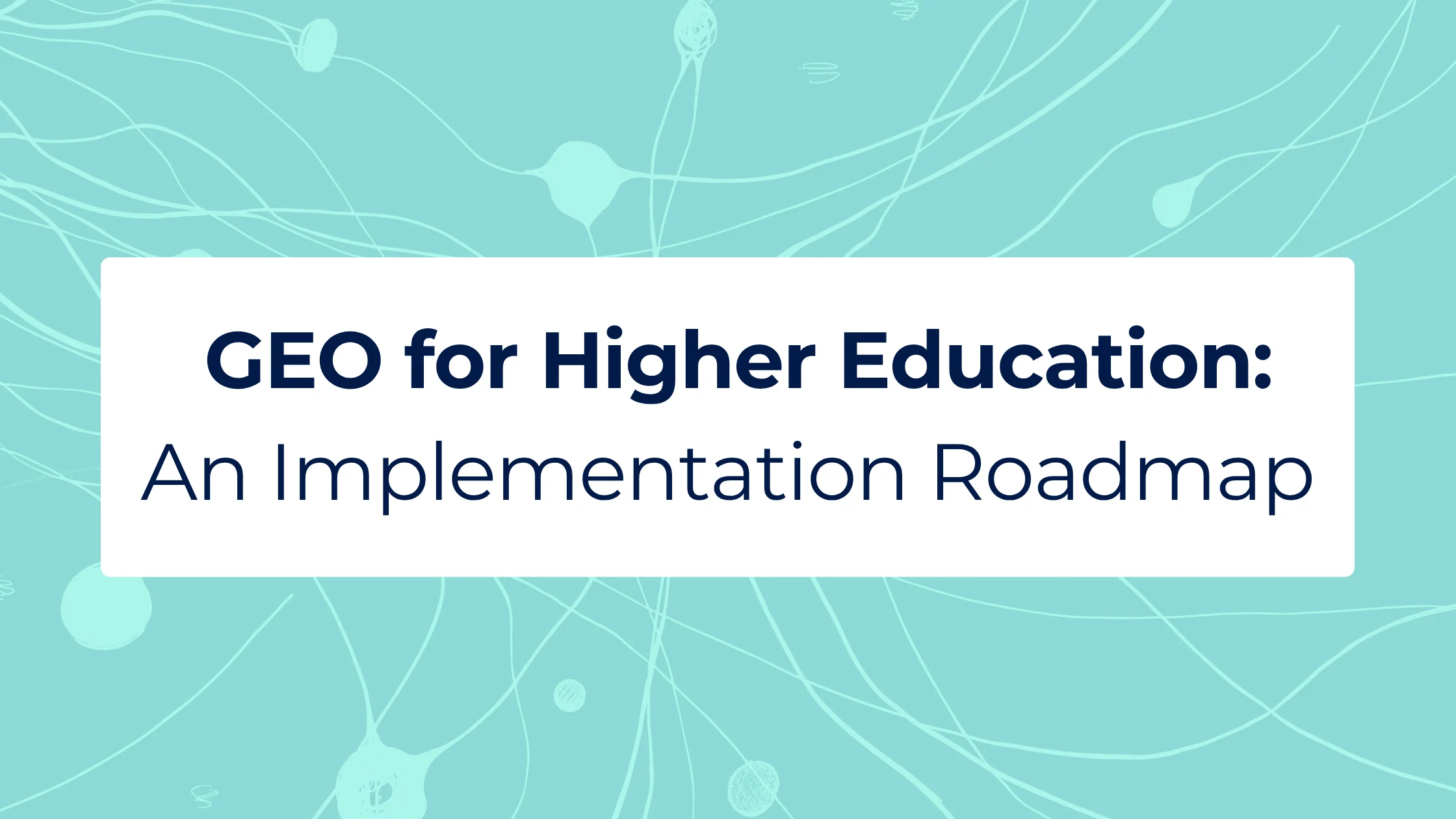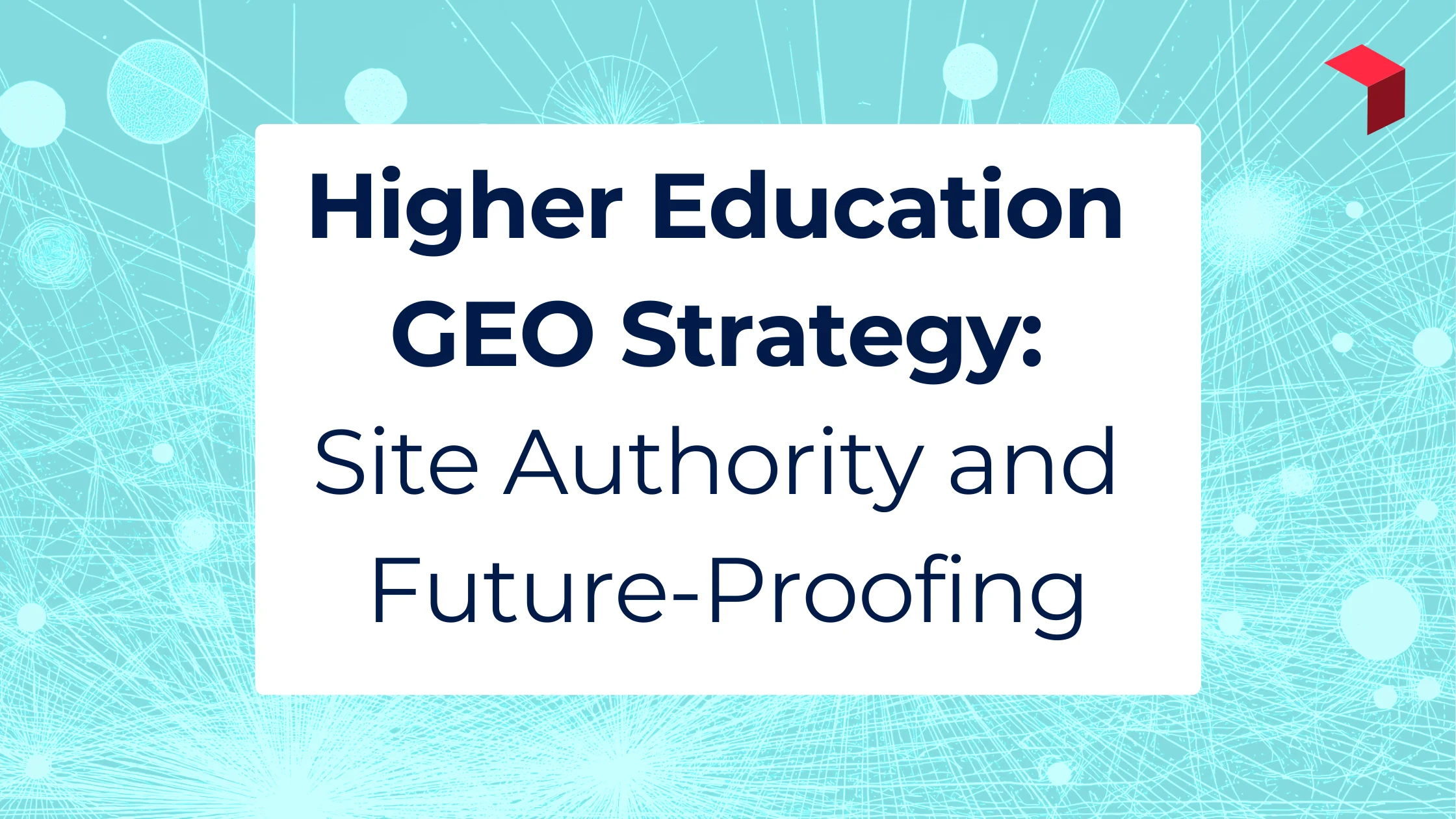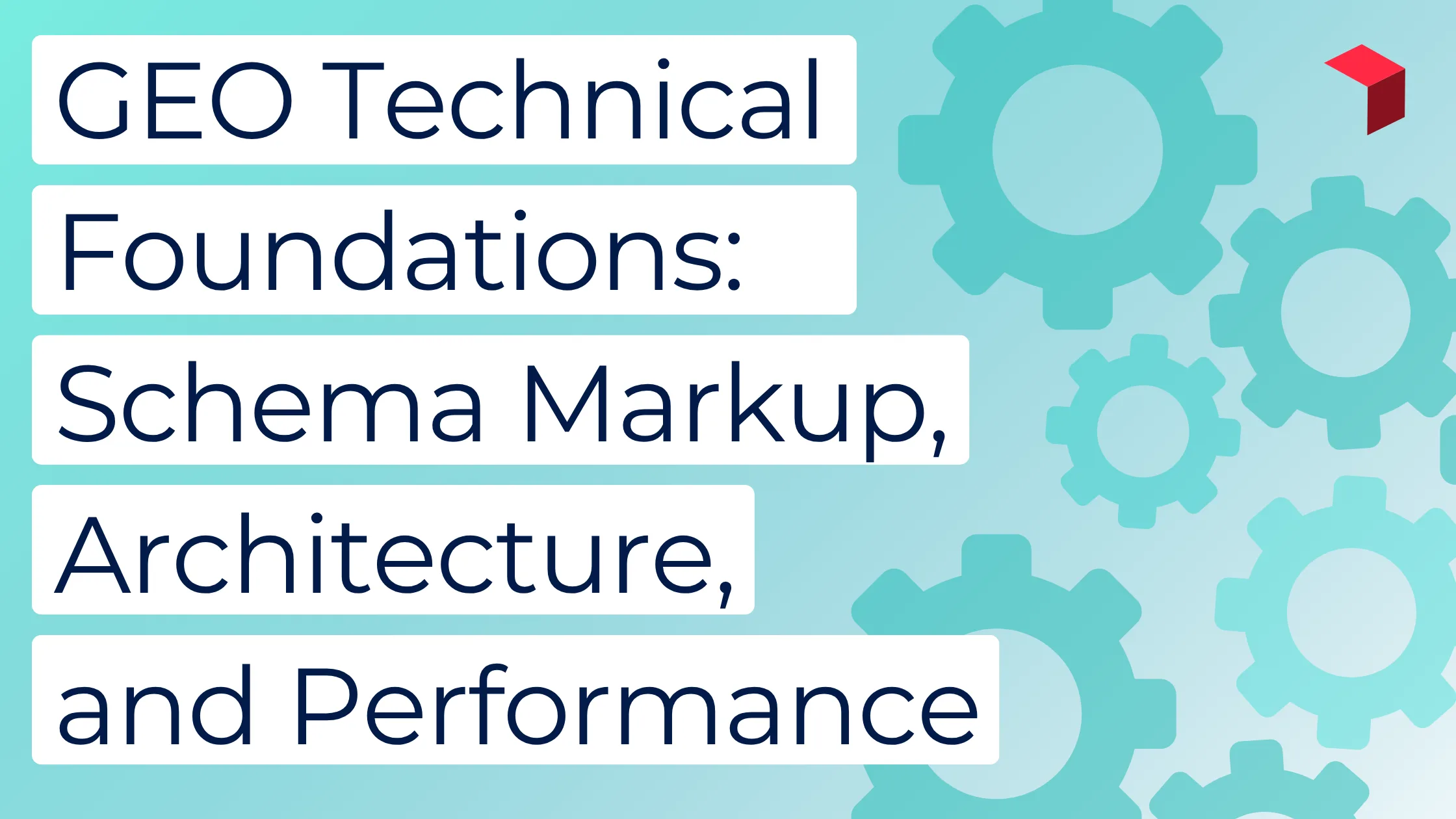From Strategy to Execution
You’ve restructured your content. You’ve implemented schema markup. You’ve begun building institutional authority. But if GEO lives only in your planning docs, you’re missing the real opportunity. Implementation is where visibility happens.
In this final installment, we walk you through:
- A detailed 90-day roadmap to operationalize GEO
- Clear team roles and resource planning
- Real-world best practices from successful higher ed digital teams
All framed within a broader digital marketing strategy for higher education, where discoverability, authority, and relevance matter more than ever.
Implementation is where visibility happens.
In this final installment, we walk you through:
- A detailed 90-day roadmap to operationalize GEO
- Clear team roles and resource planning
- Best practices seen across higher ed digital teams
- GEO content briefs and LLMs.txt file use
All framed within a broader digital marketing strategy for higher education, where discoverability, authority, and relevance matter more than ever.
Why GEO Implementation Matters in Higher Ed
In today’s AI-powered search landscape, SEO for higher education is no longer just about rankings and backlinks. Instead, it’s about:
- Being cited in AI Overviews
- Appearing as a trusted source in ChatGPT, Claude, and Perplexity
- Providing structured, semantically clear content that AI systems can interpret and reuse
Generative Engine Optimization (GEO) is the new backbone of search visibility. But it’s only effective if you operationalize it across your marketing, content, and technical teams.
The 90-Day GEO Implementation Roadmap
To bring GEO to life, your team will need structured planning tools, including what we call GEO content briefs. These briefs are created by your content strategist or SEO lead, often in collaboration with enrollment marketing, academic departments, or faculty subject-matter experts.
Each brief serves as a blueprint for content creators and developers, helping to:
- Align with real AI search queries
- Structure the page semantically for better AI interpretation
- Include trust-building signals like data and schema markup
What Goes in a GEO Content Brief?
- Target AI queries or topic clusters
- Proposed page title and headings
- Schema recommendations (e.g., FAQPage, EducationalOccupationalProgram)
- Stats, rankings, or testimonials to include
- Calls to action and internal link targets
Download this free PDF GEO Content Brief to help guide you through this process.
What is LLMs.txt and Why You Need It
The llms.txt file lives in your site’s root directory and contains authoritative information about your institution: mission, accreditation, programs, leadership, and key URLs. It helps generative AI tools like ChatGPT and Perplexity reference reliable source material.
Add this to your implementation checklist alongside robots.txt and sitemap.xml.
Phase 1 (Days 1–30): Audit & Prioritize
Goals:
- Assess visibility in AI systems
- Identify and prioritize high-impact pages
- Draft GEO content briefs and start
llms.txtcreation
How to Achieve These Goals:
Start by auditing your institution’s presence in AI-powered search tools. Use prompt testing in ChatGPT, Claude, and Perplexity to identify whether your school is mentioned in relevant search contexts. Combine this with AI Overview data from Semrush and traditional SEO tools to spot your top-performing and underperforming pages.
Simultaneously, review your site’s robots.txt file and begin outlining your llms.txt file with clear, verified data about your institution.
Draft your first set of GEO content briefs by working with subject-matter experts to identify questions students are actually asking.
What You’ll Achieve:
By the end of Phase 1, your team will have a clear understanding of your current discoverability in AI systems, a prioritized list of content to improve, and foundational planning materials in place. You’ll also have your first GEO briefs in progress and your site infrastructure prepped for optimization.
Key Actions:
- 5–10 content brief targets
- Crawl/access audit and robots.txt/llms.txt review
- Baseline dashboard for AI and organic performance
Phase 2 (Days 31–60): Build & Optimize
Goals:
- Create AI-optimized content
- Implement schema, semantic structure, and briefs
How to Achieve These Goals: Use your content briefs to begin publishing semantically structured content that directly addresses student needs. Work closely with writers to ensure headlines and sections map to the questions surfaced in Phase 1.
Collaborate with developers to implement schema.org markup, especially FAQPage, EducationalOccupationalProgram, and CollegeOrUniversity schema, on target pages.
Your llms.txt file should be finalized and publicly hosted at this stage.
Be sure to track early engagement through Looker Studio and tag key on-page elements for visibility monitoring.
What You’ll Achieve: By the end of Phase 2, you’ll have published optimized, AI-ready content that aligns with student intent. This content will be structured with schema, informed by GEO briefs, and enriched with data and conversion elements, positioning your institution for AI visibility.
Key Actions:
- Live content optimized per brief
- Updated Looker Studio dashboard
llms.txtpublished and tested
Phase 3 (Days 61–90): Monitor, Iterate, Expand
Goals:
Track results and expand to new pages and teams
How to Achieve These Goals:
Now that AI-optimized content is live, begin testing prompts in tools like Perplexity and ChatGPT to track citations. Review site analytics to evaluate content performance, focusing on pages where schema was applied or GEO briefs were used.
Interview stakeholders to assess workflow adoption and gather feedback. Use insights to refine briefs and templates. Encourage other departments, like Career Services or Student Affairs, to create their own GEO briefs based on what you’ve learned.
What You’ll Achieve:
By the end of Phase 3, you’ll begin seeing early indicators of success, such as increased AI citations or improved search performance. You will be ready to scale GEO practices to other departments. You’ll also have a documented playbook for sustaining the work long term.
Key Actions:
- Internal wiki or playbook
- Updated performance benchmarks
- New wave of briefs for cross-campus adoption
Resource Planning and Team Structure
Even small teams can implement GEO. The key is clarity.
| Role | Responsibilities |
|---|---|
| SEO Strategist | Schema, audits, keyword research |
| Content Strategist | Writes briefs, oversees editorial structure |
| Web Developer | Implements schema, monitors crawl health |
| Marketing Manager | Tracks AI citations, traffic, behavior, Aligns content with instituational goals |
| Leadership | Removes blockers, helps to prioritize the work |
Real-World Patterns That Work
Institutions gaining AI search visibility consistently:
- Create briefs around student questions, not just keywords
- Structure content with schema and semantic clarity
- Track AI mentions using tools and prompts
- Repurpose briefs across content types and platforms
Frequently Asked Questions
Yes. GEO includes SEO fundamentals, but prioritizes content that generative engines can parse and cite. It’s less about page rank, more about structured, trusted, re-usable content.
FAQ pages, student decision guides, program comparisons, and structured cost/outcomes data. Anything that answers real student questions clearly and authoritatively.
Google Search Console, Looker Studio, Semrush AI filters, Perplexity Sources, and manual prompt testing in ChatGPT and Claude.
Many institutions observe early signs of improved visibility, like AI citations or branded mentions, within 4–6 weeks. Broader performance gains typically build over 3–6 months, depending on factors like site authority and optimization depth.
Final Thought: Build the System, Not Just the Content
If SEO was about building links, GEO is about earning trust.
Use this roadmap to integrate GEO into your day-to-day operations:
- Start with briefs
- Use schema and LLMs.txt
- Track what matters
- Repurpose across channels
The next generation of prospective students isn’t asking Google, they’re asking AI.
Will your institution show up?
Need help operationalizing GEO at your institution?
Let’s build a roadmap together. Contact iFactory.




